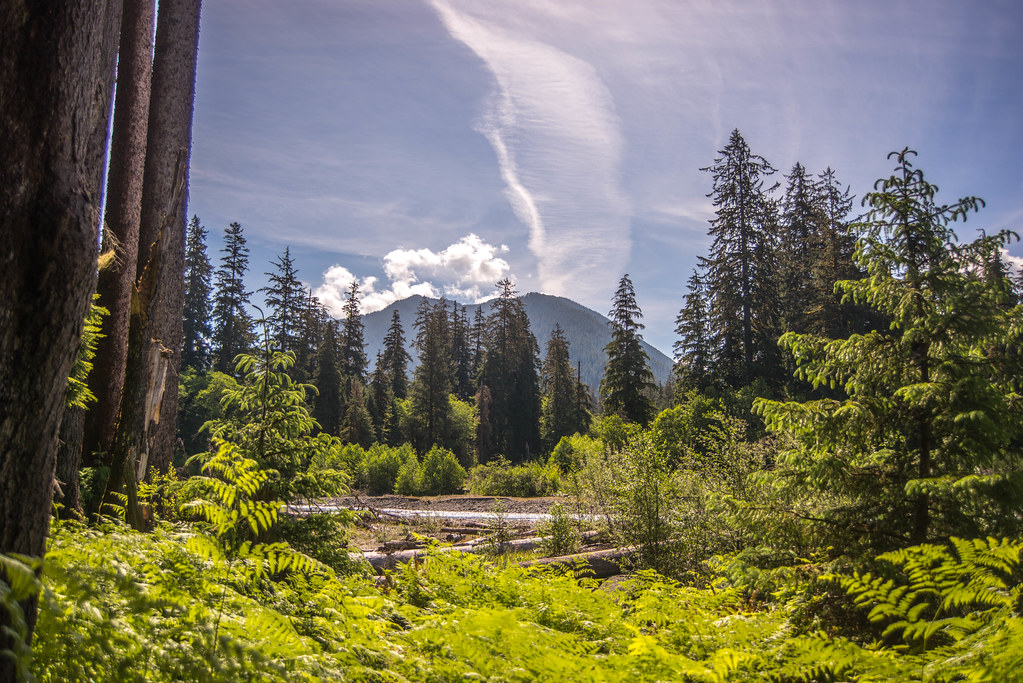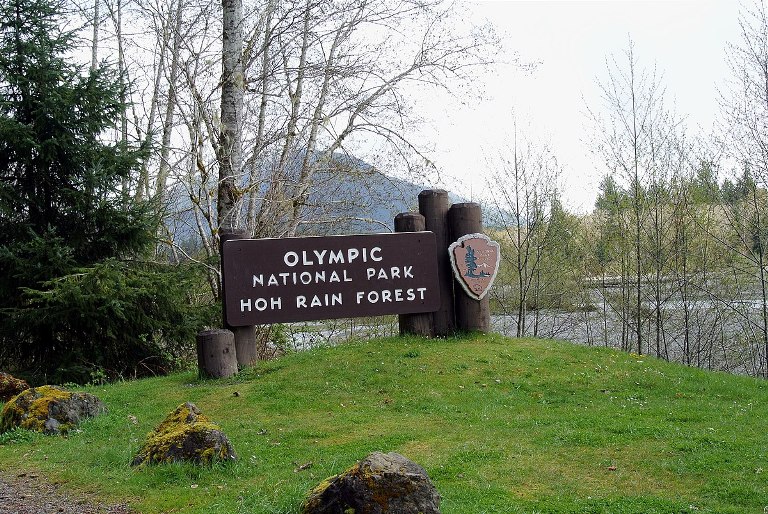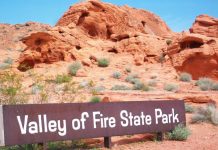Hoh Rainforest is one of the largest temperate rainforests in the United States. This area does not have sweeping vistas of peaks or the ocean like other Olympic National Park spots. It is located on the Olympic Peninsula in western Washington State.
Thick forests, Western hemlock trees, and Sitka spruce trees are the main attractions. There are 13 to 14 feet of rain that fall here annually, which is why the forest feels so lush.
This forest stretches over 24 miles along the Hoh River at elevations ranging from 395 to 2,493 feet. A surface that isn’t covered in moss is rare because dead trees become nurse logs for new plants.

It is not uncommon for trees to grow in a line, indicating that they all began on the same nursery log. There are more shades of green than you can imagine in one of the world’s most spectacular temperate rainforests.
In order to see the rushing Hoh River or hike the trails, most visitors stop at the visitor’s center. Approximately ten percent of the park’s elk live in this river valley; keep an eye out for Roosevelt elk, birds, and black bears. Thousands of years ago, glaciers formed the Hoh River valley. Commercial exploitation is prohibited in the forest.
Upper Hoh Road, heading east from U.S. 101, leads to the Hoh Rain Forest on the west side of the park. Look for national park signs on U.S. 101 about 13 miles south of Forks. On the banks of the Hoh River, you can explore the complexities of the temperate rainforest with self-guided nature trails in the Hoh Rain Forest.
It has a small gift shop, food shops, and picnic tables outside. The area is covered in moss and lichen, and the low, small building blends into the thick forest. Before reaching the visitor’s center, cars must pass through a fee-charging parking area. On the 48 km of the river between the park boundary and the Pacific Ocean, the forest has been cleared within the last century, but pockets of forest remain.
There is a relatively easy 0.8 miles roundtrip trail that is called the hall mosses. There are information plaques along this short, informative trail that winds through the giant, moss-covered trees that Olympic National Park is famous for. Elk graze nearby, while signage describes the forest’s complex ecosystem. In addition to hiking, you can stop for a snack at the Hoh River, which is near the Spruce Natural Trail. The area contains bears, but rangers keep tabs on dangerous animals, so it’s safe.
You can hike the Hoh River Trail to Glacier Meadow all the way to Mount Olympus’ base along the Hoh River. Many climbers begin here in their quest to scale the Olympics’ tallest peak. Backpackers will need special equipment to climb up the Blue Glacier to the summit after they reach Glacier Meadows below the mountain (17.3 miles). It is possible for day hikers to follow the trail as far as they like before turning back.
After one mile, the river is visible, Mount Tom Creek campsite is 2.3 miles away, and Mineral Creek Falls is 2.8 miles away. The visitor’s center is about 5.3 miles from Five Mile Island, in the Hoh River.
A picnic shelter is 0.5 miles away, making it a convenient place to turn around after hiking nearly 12 miles. From the Hoh Rain Forest Visitor Center, there’s not much elevation gain in the first few miles. Since the river burbles and giant trees are visible, hikers can enjoy these features.
Read More – Adak National Forest – The Smallest Forest in America










